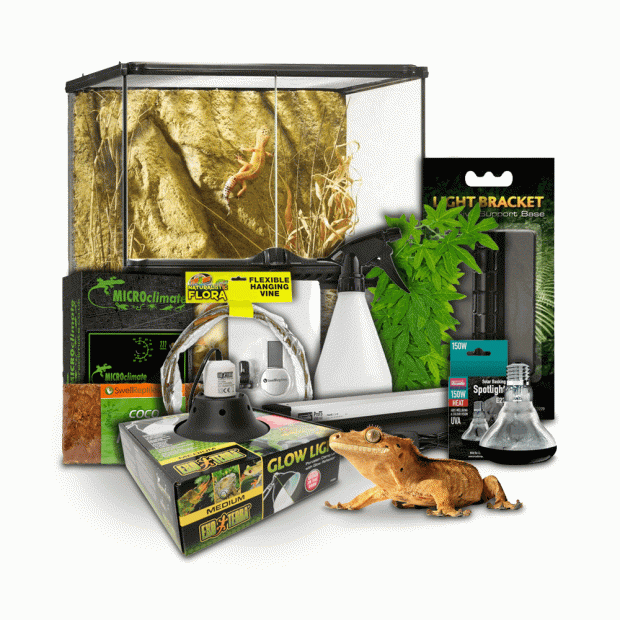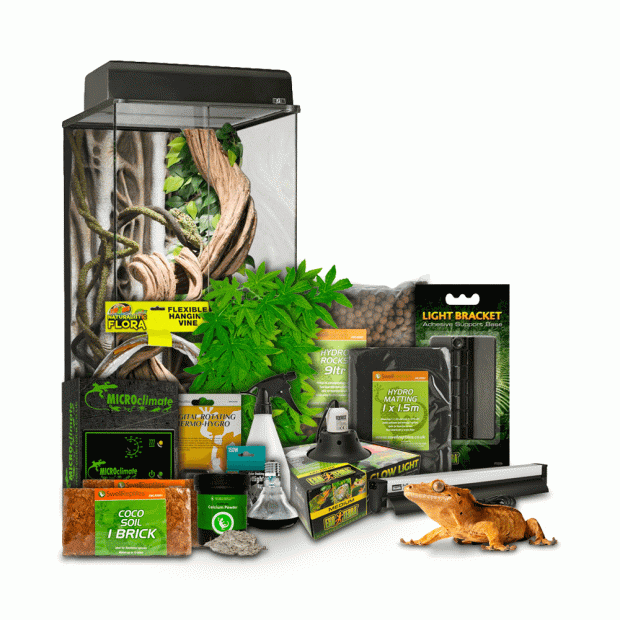- Mourning geckos are small and easy to keep
- Simple care requirements and fun pets
- Can be housed in communal groups
Do Mourning geckos make good pets?
Mourning geckos are a small species of gecko, growing to around 8.5-10cm (3-4") in length. They generally have a light tan body with dark spots running down the back, a light cream belly and a brown strip running from the ear to the tip of the nose. Mourning geckos are widespread across the coastal regions of the Indian and Pacific oceans and have been widely introduced to many Neotropic areas of South America.
Mourning geckos are a cathemeral species, meaning they are active during both the day and night time hours. However, they do tend to favour the night, as this would be the safer time for them to be active in nature.
Interestingly, almost the entire species of Mourning geckos are female, reproducing through parthenogenesis, a type of asexual reproduction that does not require a male to fertilise the eggs. Males of the species do exist, although they are extremely rare and are usually sterile. Female Mourning geckos lay eggs in batches of 1-2 every 4-6 weeks, so it is important to manage this if you do not wish to become overrun with baby Mourning geckos.
What enclosure size do Mourning geckos need?
Mourning geckos are an arboreal species, so their enclosure should be vertically oriented to accommodate this. Due to the humid environment required to house Mourning geckos, glass terrariums tend to work better than wooden vivariums, as they eliminate the risk of water damage to the enclosure.
For a small group of Mourning geckos, we recommend a minimum enclosure size of 45x45x60cm (18x18x24"), such as the Swell Glass Terrarium 45x45x60cm. Alternatively, our range of Crested gecko starter kits would also be suitable for housing Mourning geckos.
What heating equipment do I need for Mourning geckos?
The ideal basking temperature for Mourning geckos is around 26-29°C (80-85°F), this should be towards the top of the enclosure, with the temperature gradient running down to around 21-24°C (70-75°F) towards the bottom of the enclosure. This is easiest to achieve using a basking lamp or a ceramic heater hung above the terrarium using a light bracket.
All heating equipment must be hooked up to a compatible thermostat to ensure their safety, if opting for a basking lamp, a dimming thermostat is required, alternatively if using a ceramic heater, a pulse thermostat is required.
Unless your home drops below around 15°C (59°F) overnight, you will not require any additional heating for the nighttime, however, if it is required, a non-light emitting heat source such as a ceramic heater can be used, set to lower temperatures than during the day to mimic a natural overnight temperature drop.
Do Mourning geckos need UVB?
Although Mourning geckos were kept in the hobby for a long time without the use of UVB, this often led to sick and even deformed geckos. More recent research has highlighted the importance of UVB exposure for this species and at Swell Reptiles, we use UVB for all of our Mourning Geckos.
Being mostly nocturnal, Mourning geckos do not naturally spend much time in the sun and therefore only require a low-level UVB to keep healthy. For this, we recommend the Arcadia ShadeDweller Arboreal.
The strength of your UVB should be based on the distance between the light and your animals highest basking point, so if this distance is greater than 38cm (15”) you may need the slightly more powerful Arcadia ProT5 Kit - Forest 6%. If you are unsure whether the UV you have purchased will be suitable, you can check the UVI at varying distances using a Solarmeter (this should be between 1-2 for Mourning geckos).
How humid does a Mourning gecko enclosure need to be?
Mourning geckos thrive at humidity levels of around 60-70%, with highs of 80-90%. To achieve this, you would usually need to mist the enclosure daily with a handheld spray bottle, or use a more sophisticated rain system or fogger to manage the humidity levels.
How do I decorate a Mourning gecko enclosure?
Due to the increased humidity required to keep Mourning geckos healthy, they are the perfect choice for diving into the world of bioactivity. The foundations for any bioactive set-up should be a drainage layer of Hydro Rocks covered with a semi-permeable Hydro Matting before topping with high-quality moisture-retaining planting substrate such as Arcadia EarthMix.
Once you have the foundations in place you can begin adding your live plants, it is worth bearing in mind that due to the drops in humidity, the chosen plants need to be tolerant of this and should also grow in such a way that you will be providing lots of cover in the canopy, which makes hardy climbers such as Golden Pothos a great option.
If bioactive isn’t your cup of tea, your Mourning geckos will not mind too much, just ensure you still provide plenty of cover from artificial plants such as the Swell Trailing Abutilon and climbing areas in the form of branches and vines.
What do Mourning geckos eat?
Mourning geckos are omnivorous and naturally feed on a diet of rotting fruits and live insects. In captivity, this diet can be difficult to achieve whilst still providing your gecko with all the nutrients they require to be healthy. Due to this, there are many high-quality formulated Crested gecko diet on the market with a wide range of flavours to choose from, from leading brands such as Pangea or Repashy.
Whilst formulated gecko diets will form the largest part of your Mourning gecko's diet, occasional feedings of livefood are vital to their development, which should be offered once or twice a week. Good options are flightless fruit flies, pinhead crickets and small locusts.
All live food should be supplemented appropriately, following a set 8 meal cycle. For this, we recommend the use of a high-quality multivitamin on every feed, such as Arcadia EarthPro-A, a calcium plus magnesium supplement on every fourth feed, such as Arcadia CalciumPro Mg and finally, a vitamin D3 supplement on every eighth feed such as Arcadia EarthPro RevitaliseD3.
How do I buy a Mourning gecko?
We almost always have captive, UK bred Mourning geckos, however, they must be collected in person and cannot be ordered online. If you are interested in any of the geckos we have available, please head down to the store to see us in person.
We will ask to see a few images of the set-up to ensure this is sufficient and your temperature and humidity parameters are as they should be, and will ask a few quick questions to ensure you are ready for the commitment of adopting one of our geckos. We reserve the right to refuse adoption to anyone we feel is unprepared to adopt.
| Common names | Mourning gecko, Common smooth-scaled gecko |
| Scientific name | Lepidodactylus lugubris |
| Country | Widespread |
| Captive-bred | Yes |
| Adult size | 8.5-10cm (3-4") |
| Natural habitat | Coastal regions |
| Housing | 45x45x60cm (18x18x24") |
| Ideal temperature | 26-29°C (80-85°F) (warm end); 21-24°C (70-75°F) (cool end) |
| UVI | 1-2 |
| Ideal humidity | 60-70% with highs of 80-90% |
| Diet | Omnivorous |
| Average lifespan | 10-15 years |
| Personality | Skittish |
| Ease of handling | Moderate |
| Cohabitable | Yes |
-
 Crested gecko, Correlophus ciliatusFrom £85.00In stock
Crested gecko, Correlophus ciliatusFrom £85.00In stock -
 Gargoyle gecko, Rhacodactylus auriculatusFrom £195.00In stock
Gargoyle gecko, Rhacodactylus auriculatusFrom £195.00In stock -
 Madagascan giant day gecko, Phelsuma grandisFrom £125.00Out of stock
Madagascan giant day gecko, Phelsuma grandisFrom £125.00Out of stock






